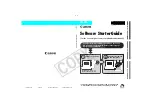
Figure 27: DNS Client Options
Host Addresses
Use this option to manage host addresses, See Figure 28 on page 25.
Figure 28: Host Address
Managing RADIUS Servers
The NSMXPress WebUI supports authentication of users defined in the RADIUS servers,
in addition to authentication of locally defined admin users.
When a user logs into NSMXpress using the WebUI, the software first checks the UNIX
user database and then the WebUI user database to authenticate the user. If the user is
not a locally defined admin user, the software contacts the RADIUS servers added to the
RADIUS server list in the Web UI to authenticate the user. The RADIUS servers are
contacted in the order of priority set in the RADIUS server list. If any of the RADIUS servers
authenticates the user, the user is logged in with the privileges that are associated with
the user profile. If none of the servers authenticates the user, the user login fails.
NOTE:
The NSMXpress appliance must be configured as a RADIUS client on
a RADIUS server so that the RADIUS server responds to authentication
requests from NSMXpress. Select any Juniper Make or Model in the
Make/Model
field while adding an NSMXpress appliance as a RADIUS client.
You will need to update the juniper dictionary file (juniper.dct) in the RADIUS
server with the Juniper defined Vendor-Specific Attribute (VSA) for
NSMXpress:
ATTRIBUTE Juniper-Nsmxpress-Profile Juniper-VSA(6, string)
r
. You will also need to add NSMXpress users with their associated user
profiles (SysAdmin, NSMAdmin, Operator, Guest), to the RADIUS database.
For more details see Steel-Belted Radius Documentation.
25
Copyright © 2010, Juniper Networks, Inc.
Managing System Administration
















































